Update from the Field: Secondary but Necessary
Posted by Dave Dyson, Agronomist on December 10, 2020

Sulfur is considered a secondary nutrient, along with calcium and magnesium. All three are considered secondary nutrients because plants require them in smaller quantities than the primary nutrients nitrogen, phosphorus, and potassium. Just because a plant nutrient is classified as secondary does not make it any less essential for a successful crop to be produced. There are 16 essential nutrients, and one is not more important than another. According to Essential Nutrients for Plants, three criteria must be met to classify a nutrient as essential:
1. The plant cannot complete its life cycle without the nutrient.
2. The deficiency symptom can be corrected by the nutrient that is deficient.
3. The element should be directly involved and be part of the plant.
In the past, the solution to sulfur needs was provided naturally through acid rain. The high sulfur coal that was burned in power plants, factories, and home heating raised the atmospheric sulfur levels, and the rain brought the nutrient down to the soil. As the pollution source of sulfur is all but cleaned up, Figure 1, we now must rely on organic matter to release a free source of sulfur. Each percent organic matter soil contains in the plow layer will yield about 100 pounds of sulfur per acre, according to Dr. Jim Camberato, Professor of Agronomy at Purdue University. This organic sulfur must then be mineralized into the sulfate form before it can be utilized by the crop. At most, only a small percentage of the organic sulfur will be made available to the crop annually. Corn kernels contain about half a pound of sulfur for every 10 bushels of grain. As the trend line for corn yields increases every year, more sulfur is removed from the root zone than what is being replaced naturally, Figure 2.
Figure 1: This map of the U.S. shows a comparison of how much sulfur has been removed from the air. The reduction in atmospheric deposition of sulfur is the reason we see more sulfur-deficient crops. https://www3.epa.gov/airmarkets/progress/reports/acid_deposition_figures.html
Figure 2: A&L Great Lakes Labs has compiled all sulfur results from soil tests that have been submitted through their laboratory between 1996-2019. The results are quite striking, as the amount of sulfur in the soil has dropped significantly.
What form of sulfur to apply to the soil will depend on the time of year the application will take place. Not all forms of sulfur are created equal. Elemental sulfur (SO2) is best applied in the fall with fall fertilizer and has the same plant uptake issue as organic sulfur, meaning it must be oxidized by the soil into the sulfate form before the plant can utilize it. Warm temperatures, good moisture, and aeration are required for sulfur-oxidizing bacteria to function. The sulfate (SO4) form of sulfur is the only form absorbed by the plant. The Andersons’ NutraSoft® DG (CaSO4) is a good source of sulfate that can be mixed with fertilizer and added directly to the soil. Since sulfur is immobile in the plant, planning to add sulfur throughout the growing season can be a plan for success. There are three critical growth stages during the corn’s life cycle when an application of sulfur will be beneficial. First, add sulfur at planting with a high-quality, low-salt PureGrade® starter. Second, add UltraMate® Zn to your sidedress application to provide sulfur during the V5 growth stage, increasing rows around the ear. Finally, apply Over Pass® CF with a fungicide at pollination to help finish out the kernels at the end of the season.
In conclusion, it is essential to develop an application plan that will provide sulfur to our crop throughout the growing season. Apply multiple applications of sulfur in a form that is available to the plant from the beginning of the year and continue these applications at every important growth stage of the corn plant. This will ensure the plant will have adequate levels of sulfur to produce a high-quality crop. Make an appointment with a trusted Ag Advisor from The Andersons today and plan a successful 2021 crop.
FOR MORE INFORMATION:
Please complete the form, and we’ll get you in touch with your Territory Manager from The Andersons.

Dave Dyson is a regional agronomist for The Andersons’ Farm Centers which are located throughout Ohio, Michigan, and Indiana. He is an Indiana native and grew up on a dairy farm in Miami County. A graduate of Purdue University with a degree in Crop & Soil Science, Dave has a deep knowledge of various agronomic topics and is committed to helping growers improve their crops. If you have any questions, Dave can be reached at david_dyson@andersonsinc.com.
© 2020 The Andersons, Inc. All Rights Reserved. NutraSoft, Over Pass, PureGrade, and UltraMate are registered trademarks of The Andersons, Inc.




